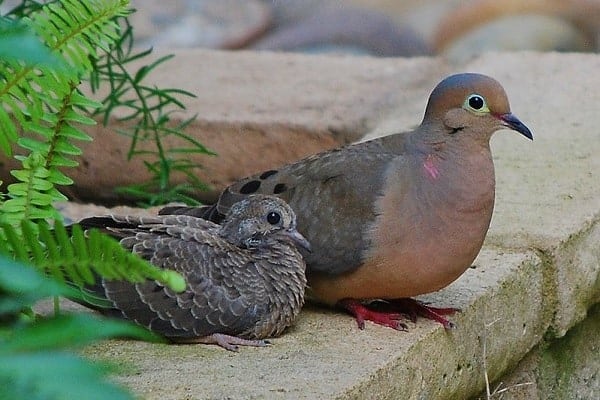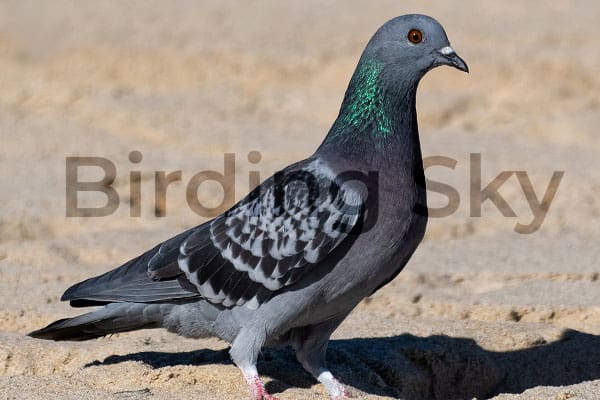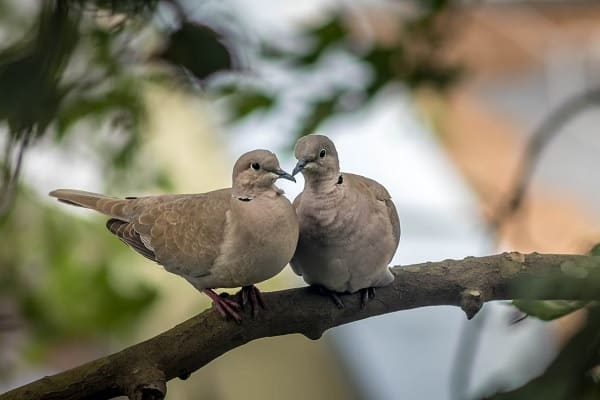Hello, fellow bird enthusiasts! As a lover of Connecticut’s wildlife, I am excited to share my knowledge about the beautiful doves in Connecticut state. In this article, we will explore the different types of doves that call Connecticut their home, including their habitats, breeds, and behaviors within our local surroundings.
Here are the main points:
- Connecticut is home to various dove breeds
- Doves can be found in different habitats across the state
- Each dove breed has unique characteristics and behaviors
- The presence of doves in Connecticut adds to the state’s biodiversity
White Doves in Connecticut
Connecticut is home to a large population of white doves, and many people enjoy observing them in their natural habitats. As a journalist who specializes in birdwatching, I have had the pleasure of observing these beautiful creatures firsthand. In this section, we will explore the features of white doves, their habitat preferences, and behaviors in Connecticut.
Physical Appearance
White doves are known for their unique appearance, with light grey wings and a pure white body. They have a slender build, with a small head and short beak. The feathers of the white dove are soft, fluffy, and help keep the bird warm during colder months. Males and females are generally identical in appearance, making it difficult to distinguish between genders.
Symbolism and Significance
White doves hold significant importance in several cultures across the world, often representing peace, love, and purity. In Christianity, they are seen as a symbol of the Holy Spirit and divine intervention. White doves are often released at weddings and other special occasions to symbolize new beginnings and unity.
Habitat Preferences and Behaviors
White doves thrive in environments with ample food sources, such as seeds and grains. They are often found near agricultural fields and suburban areas with well-maintained parks and gardens. They are excellent fliers and can travel long distances to find food. White doves are also known for their intricate mating rituals. During courtship, the male typically displays his feathers and sings to attract a female. Once the female is attracted, the pair will build a nest and mate. The female will lay eggs, and both parents will take turns incubating them until they eventually hatch.
The Diversity of Dove Breeds in Connecticut
Connecticut’s diverse range of habitats is home to a variety of dove breeds. Each species boasts unique characteristics, from their physical appearance to their behavior patterns. Let’s explore the different types of doves you can find in Connecticut.
Mourning Doves

The mourning dove is a popular sight in Connecticut and across the United States. These birds are known for their soft cooing sound, which is often heard in the early morning and evening. They have a light grey-brown body and long, pointed tails. Mourning doves can be found in open areas such as fields, farms, and suburban gardens.
Rock Pigeons

Rock pigeons, also known as rock doves, are a common sight in urban areas. They have a plump body and a distinctive, iridescent neck. These birds are known for their adaptability, and they can be found in a variety of environments, from city rooftops to rural farmland.
Eurasian Collared Doves

Eurasian collared doves are a relatively new addition to Connecticut’s dove population. These birds have a distinctive black collar around their neck and a pale, grey-brown body. Eurasian collared doves are typically found in suburban and urban areas, and they are known for their loud cooing calls.
| Dove Breed | Physical Characteristics | Habitat | |
| Mourning Dove | Light grey-brown body | Open areas such as fields | |
| Rock Pigeon | Plump body, iridescent neck | Urban areas, city rooftops | |
| Eurasian Collared Dove | Pale grey-brown body |
|
Each of these dove breeds has unique characteristics that make them special. By observing their behavior patterns and preferred habitats, we can gain a better understanding of their role in Connecticut’s diverse ecosystem. If you’re interested in birdwatching, Connecticut is a great place to start. With so many different types of doves and other bird species, there is always something new and exciting to discover.
Female Doves in Connecticut
As a dove enthusiast, I have always been fascinated by the role of female doves in the Connecticut dove community. These lovely birds make significant contributions to the upbringing of young doves, and their interactions with male doves are a sight to behold. Female doves have some unique physical characteristics that differentiate them from male doves. They are generally smaller in size, with plumper bodies and smaller beaks. Their feathers are also less colorful than their male counterparts, with duller shades of brown, gray, and white. In terms of breeding habits, female doves are responsible for building the nests and incubating the eggs.
They do this by laying two eggs at a time, which hatch after approximately two weeks. Once the young doves hatch, both male and female doves take turns feeding and caring for them. Female doves have unique roles within dove flocks. They often serve as the primary caregiver for the young doves, while male doves protect the nest and provide food. Female doves are also known to be very vocal, communicating with their offspring through cooing sounds.
If you’re interested in observing female doves in Connecticut, the best time to do so is during the nesting season, which typically occurs from April to August. Look for them in wooded areas, parks, and gardens, as they prefer habitats that provide ample cover for their nests. Overall, female doves in Connecticut play an essential role in the dove community. They are nurturing caregivers and provide vital support for the survival of young doves. Observing them in their natural environment is a truly special experience that I highly recommend for any dove enthusiast.
The Enigmatic Black Doves of Connecticut
Connecticut is home to a diverse range of doves, but none are quite as striking as the black dove. These birds are a captivating sight, with their glossy black plumage and distinctive red eyes. In this section, we will delve into the unique characteristics of these enigmatic birds, exploring their physical appearance, symbolism, and behavior patterns within our local environment.
Physical Characteristics
Black doves are similar in size and shape to other dove species, measuring around 12 inches in length and weighing roughly 6-8 ounces. However, what sets them apart is their striking plumage, which is entirely black except for a white crescent on the back of their neck. Their eyes are a bold, bright red, providing a striking contrast to their dark feathers.
Symbolism
“The black dove is often associated with mystery, transformation, and change. In many cultures, they are a symbol of good luck, protection, and the release of negative energy.“
These birds have been revered throughout history for their unique coloration and distinctive appearance. In many cultures, black doves are seen as spiritual messengers, signifying the need for transformation and positive change. They are also believed to provide protection and ward off negative energy, making them a popular choice for spiritual ceremonies and rituals.
Behavior Patterns
Black doves are often found in urban and suburban areas, frequenting parks, gardens, and other green spaces. They are primarily herbivorous, feeding on a diet of seeds, fruits, and grains. These birds are typically monogamous, forming long-lasting pair bonds with their mates and working together to raise their young.
| Behavior Patterns | Details |
|---|---|
| Nesting | Black doves build their nests in trees, shrubs, and other vegetation. |
| Mating | Male black doves perform elaborate courtship displays to attract mates. |
| Flocking | Black doves are social birds and are often seen in flocks |
Observing Black Doves
If you want to observe black doves in their natural habitat, look for them in parks, gardens, and other green spaces throughout Connecticut. You may also be able to attract them to your backyard by providing a bird feeder filled with seeds and grains. Remember to observe these birds respectfully, without disrupting their nesting or feeding behaviors. Overall, black doves are a fascinating and beautiful addition to Connecticut’s diverse range of dove species. Whether you encounter them in your local park or observe them from afar, these birds are sure to capture your imagination and leave a lasting impression.
Observing Doves in Connecticut’s Natural Habitats
Connecticut is home to a diverse range of dove species, making it an excellent location to observe these beautiful birds in their natural habitats. It is crucial to approach the observation process with respect and a love for these creatures, keeping in mind their welfare during the process.
Preferred Environments
The preferred environments for doves in Connecticut include open fields, parks, and woodlands. These areas provide suitable nesting grounds and adequate food sources for the birds. During the early hours and late evenings, doves can be seen in parks and fields, frequently perching on trees and fence wires.
Feeding Habits
Observing doves’ feeding habits is an excellent way to learn about their behavior patterns. These birds primarily feed on seeds and grains found in open fields and open areas with sparse vegetation. Additionally, they are known to feed on fruits and berries during the summer months.
Nesting Behaviors
Doves in Connecticut typically form monogamous relationships during the breeding season. Observing their nesting behaviors is a remarkable experience, with doves constructing their nests in trees, shrubs, and even on the ground. During the nesting period, it is essential to keep a safe distance to avoid disturbing the birds. When observing doves in their natural habitats, it is vital to maintain a respectful and quiet distance. It’s best to avoid sudden movements or loud noises, which may disrupt their behavior. Furthermore, staying on the designated paths while observing these birds helps prevent habitat disruption and disturbance. Observing doves in Connecticut provides an excellent opportunity to appreciate the beauty of these creatures and learn more about their behavior patterns and habitats.
Frequently Asked Questions
Q1: Are there pigeons in Connecticut?
Yes, pigeons are found in Connecticut, as they are common urban birds present in various regions.
Q2: How many bird species live in Connecticut?
Connecticut is home to around 420 bird species, making it a diverse habitat for avian life.
Q3: What do doves symbolize?
Doves are often symbols of peace, love, and hope in various cultures. They carry positive connotations and are associated with harmony.
Q4: Are pigeon and dove the same?
Pigeons and doves belong to the same family of birds (Columbidae), but they are different species. The terms are often used interchangeably, but doves are generally associated with smaller, more graceful species, while pigeons are considered larger and more robust.
